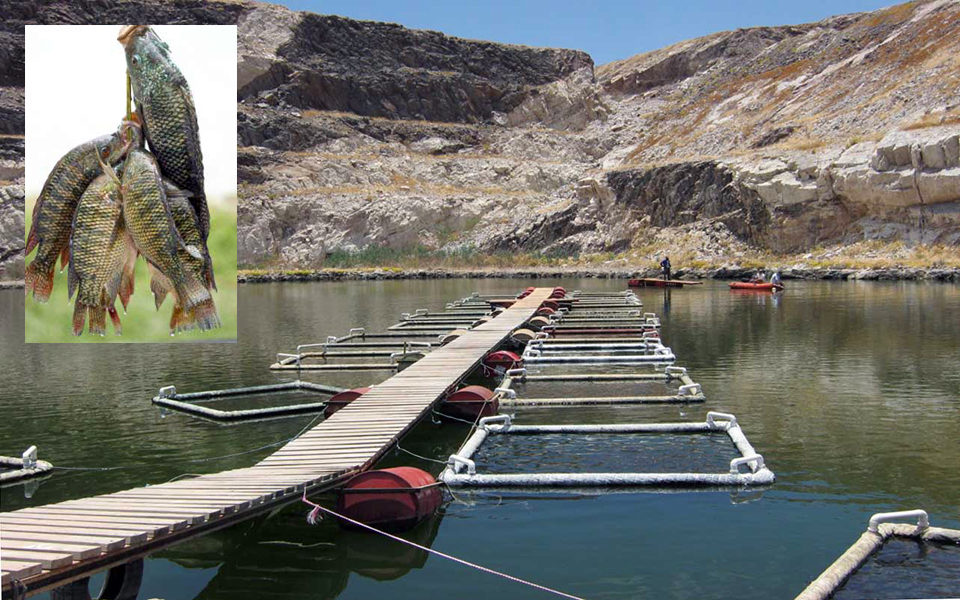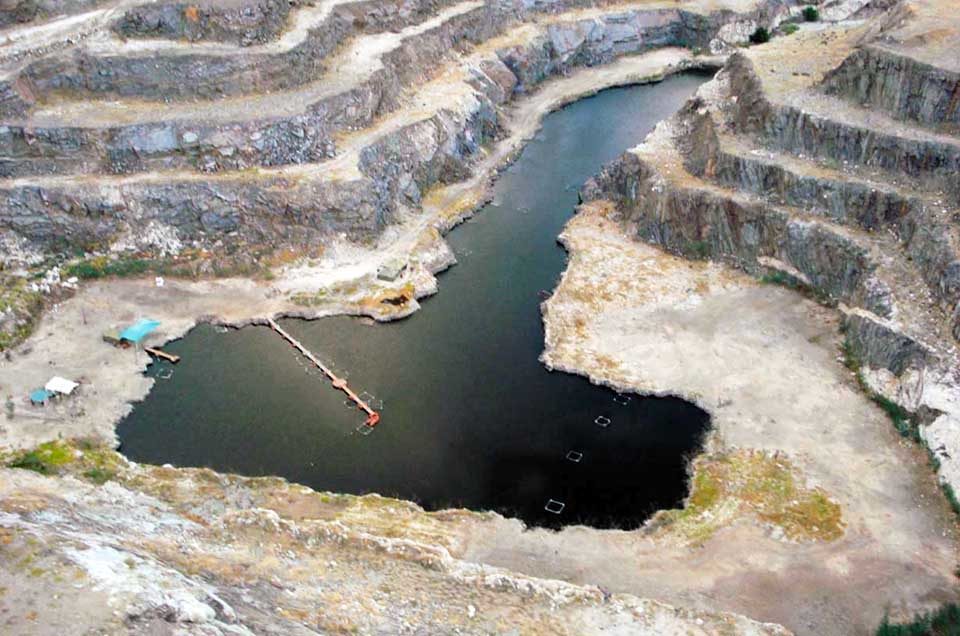Project aims to educate consumers on nutritional benefits of freshwater fish consumption

The development of aquaculture in Namibia is particularly important, since the government has established priorities on food security and poverty reduction. Sustainable development of this sector can help achieve social and economic benefits.
A unique fish-farming project in Uis, Namibia, is situated in a remote and arid region of the Namib Desert of southwestern Africa. The key objectives of this project were to utilize an existing water resource to produce food fish and improve food security, and ensure the participation of local communities.
The communities included marginalized women groups, especially those with human immunodeficiency virus infection/acquired immunodeficiency syndrome (HIV/AIDS), lactating women, youth groups and unemployed individuals. The project empowers the Uis village communities through organized training and capacity-building initiatives for both cage farming and eco-tourism development.
Infrastructure
A recirculating aquaculture system – the first RAS in Namibia – that supplies tilapia fingerlings is combined with cage culture at a nearby lake. This lake originated from a previous tin mine that eventually dug into an underground aquifer. The water quality of the lake is good, with analyses indicating levels of heavy metals below the detection limit of the analyzer. Dissolved-oxygen levels are maintained by prevailing winds.
The project also reflects the country’s first implementation of cage culture. The 30 floating cages in the lake are anchored next to a floating walkway that serves as a platform for feeding and harvesting. The cages consist of 9-square-meter floating frames with nets suspended at a depth of 2 meters. The current production of 4 metric tons per month is achieved by stock splitting and grading at a regular rate.
Feeding of fish and fry is done manually at a frequency of five times daily. Feed powder with 38 percent crude protein is used for the fry and juvenile fish. Fingerlings are fed 38 percent-crude protein pellets of 2-millimeter diameter, while adult fish (including broodstock) receive 4-millimeter pellets with 30 percent crude protein.
Fingerlings are produced continuously in a recirculating aquaculture system consisting of 11 pools that produce 25,000 fingerlings a month. Eggs are collected every two weeks. Fish are grown to 40 grams, and the fingerlings are then supplied for grow-out.
Water from the pools is recirculated through an aquaponics system, where various crops are grown. Water returned from the aquaponics is then pumped through a vortex and later biofilter system. Pool water is heated by solar panels during the daytime, while a heat pump maintains the temperature above 25 degrees-C during the night.

Product
The Mozambique tilapia (Oreochromis mossambicus) are harvested at weights of 200 to 250 grams. Smaller fish are sold to the informal sector. Harvested fish are washed in clean water before packaging in 5-kg frozen cartons or 3-kg bulk plastic bags.
Further development
The existing cage culture system occupies only about 10 percent of the water body available. The objective is to utilize the lake to its full projected capacity of 12 metric tons per month. A minimum depth of 3 meters below the cage bottoms will be maintained. Water quality is regularly monitored to determine the ultimate stocking density.
Construction of a new hatchery and broodstock pool system that will be able to produce 60,000 fingerlings monthly is already under way. Another objective is to promote commercial aquaculture farming and assist farmers with the establishment of additional grow-out facilities. Market research has showed a need for the continuous supply of fresh and frozen filleted catfish. The initial annual capacity of a planned catfish facility will be 60 metric tons.
Aquaculture activities in Namibia are regulated by legislation overseen by the Ministry of Fisheries and Marine Resources. This project maintains a close relationship with the ministry while its knowledge and experience are shared.
Perspectives
Namibia is mainly a meat-eating country, but the government and especially the Ministry of Fisheries and Marine Resources have been trying to promote aquaculture at all levels. The consumption of tilapia is common in certain regions of Namibia, but seasonal. In general, the local market is oriented toward marine fish. The farm project aims to educate consumers on the nutritional benefits of freshwater fish consumption and establish a sustainable freshwater fish market.
Since most Namibian restaurants, lodges and hotels do not have tilapia on the menu, these markets will be targeted through the fish-farming initiatives. Furthermore, the establishment of additional cage culture will provide opportunities for women, youths and disabled people to improve their social livelihoods.
Incorporating aquaponics with recirculating aquaculture systems will make a significant contribution toward the profitability of this project and related supporting secondary industries. The hatchery will supply fingerlings to various communal areas throughout Namibia, where farmers must be trained and assisted to efficiently grow out fish to marketable sizes.
The cage project also has potential as an eco-tourism attraction. Potential farm tourism activities include general tours of the hatchery, nursery and grow-out facilities; seasonal angling competitions or even the establishment of a recreational water park. Students from universities and other institutions may apply for internships at the fish farm as part of their academic experiences.
(Editor’s Note: This article was originally published in the November/December 2013 print edition of the Global Aquaculture Advocate.)
Authors
-
Md. Ghulam Kibria
Special Aquaculture Advisor
Ministry of Fisheries and Marine Resources
P/Bag 13355, Uhland Street
4th Floor, Room 403
Windhoek, Namibia[97,110,46,118,111,103,46,114,109,102,109,64,103,109,97,105,114,98,105,107]
-
Johan van der Westhuizen
General Manager
Uis Aquaculture Farm
Namibia -
Louis van der Westhuizen
Assistant Manager
Uis Aquaculture Farm
Namibia -
Christopher Munwela
Chief Fisheries Biologist
Katima Mulilo Inland Fisheries Centre
Caprivi Region, MFMR-Namibia
Tagged With
Related Posts

Intelligence
An emerging shellfish farming industry in Namibia
For shellfish farming in Namibia to continue expanding, industry must better comply with approved sanitation standards. The Namibian Shellfish Monitoring and Sanitation Program, currently in development, will help.

Responsibility
Can sustainable mariculture match agriculture’s output?
Global, sustainable mariculture production, developed on a massive, sustainable scale and using just a small fraction of the world’s oceanic areas, could eventually match the output of land-based agriculture production. Scale and international law considerations require the involvement of many stakeholders, including national governments and international organizations.

Health & Welfare
A look at tilapia aquaculture in Ghana
Aquaculture in Ghana has overcome its historic fits and starts and is helping to narrow the gap between domestic seafood production and consumption. Production is based on Nile tilapia.

Intelligence
Adding value to tilapia to tap into U.S. market
New markets for tilapia and expansion of existing ones can be created by planning and implementing properly designed geographic strategies to meet discriminating consumer preferences. Low labor costs in most producing countries promotes value-adding by the production of fresh fillets.


